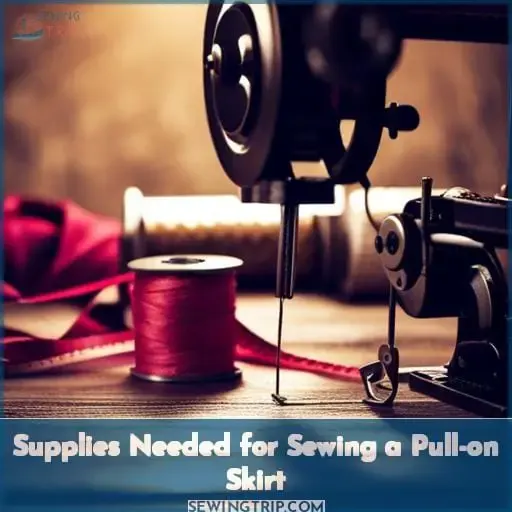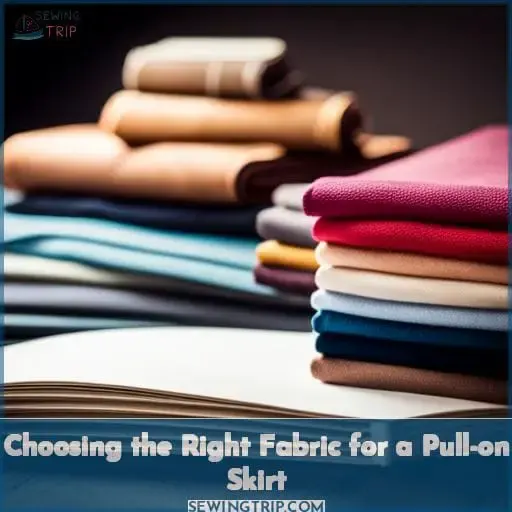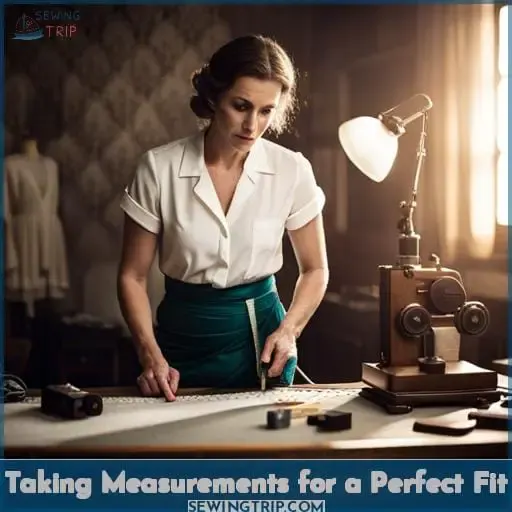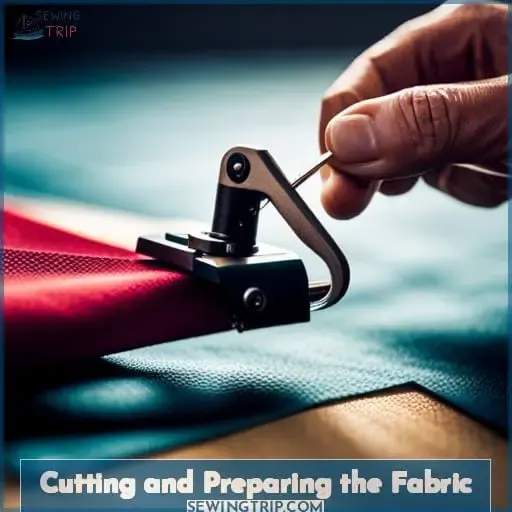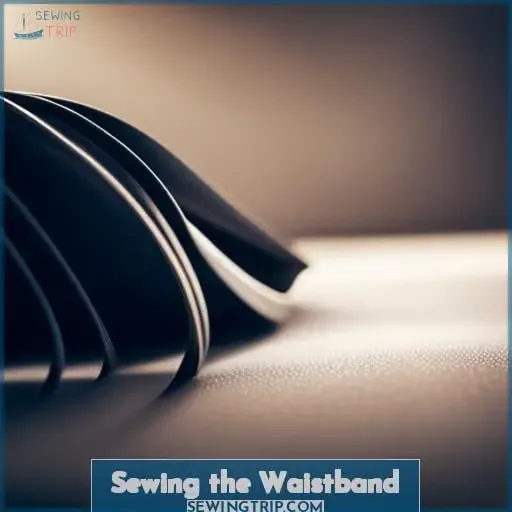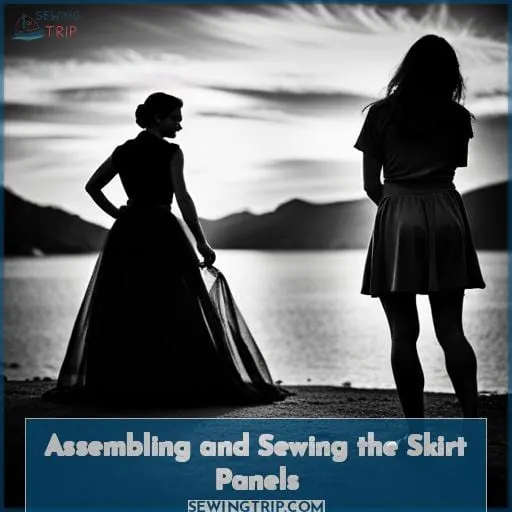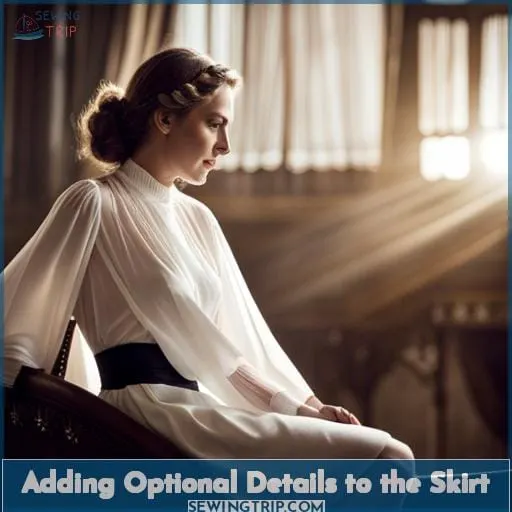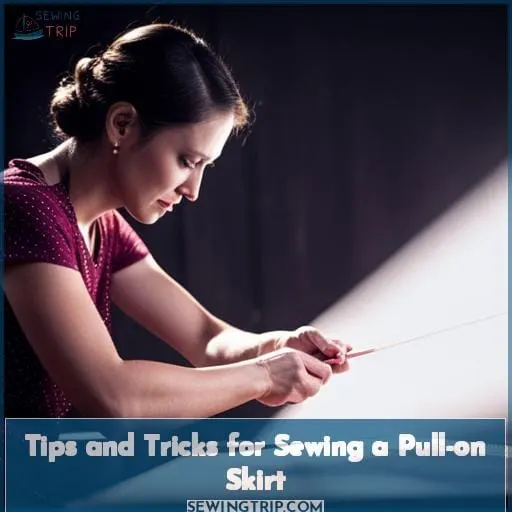This site is supported by our readers. We may earn a commission, at no cost to you, if you purchase through links.
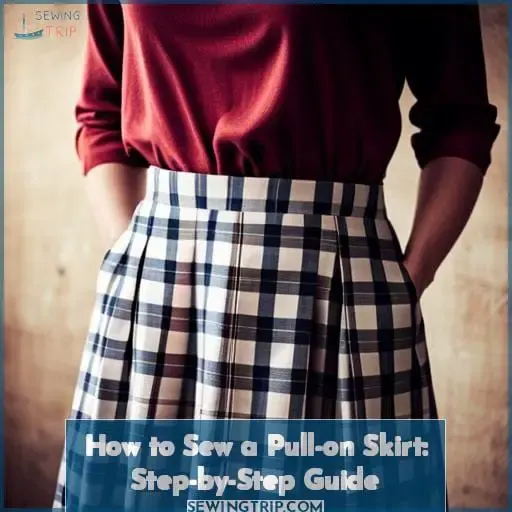 Unleash your sewing skills and conquer the art of creating a pull-on skirt with this step-by-step guide.
Unleash your sewing skills and conquer the art of creating a pull-on skirt with this step-by-step guide.
From choosing the perfect fabric to mastering essential techniques, you’ll embark on a journey of creativity and empowerment. With each stitch, you’ll feel yourself gaining mastery over the needle and thread, transforming ordinary fabric into a stylish garment that exudes confidence.
Get ready to sew your way to liberation as you dive into the world of pull-on skirts!
Table Of Contents
- Key Takeaways
- Supplies Needed for Sewing a Pull-on Skirt
- Choosing the Right Fabric for a Pull-on Skirt
- Taking Measurements for a Perfect Fit
- Cutting and Preparing the Fabric
- Sewing the Waistband
- Assembling and Sewing the Skirt Panels
- Adding Optional Details to the Skirt
- Tips and Tricks for Sewing a Pull-on Skirt
- Frequently Asked Questions (FAQs)
- Conclusion
Key Takeaways
- Choose appropriate lightweight or medium weight fabrics that have been prewashed before cutting and sewing.
- Finish raw edges and use interfacings or linings for added structure and stability.
- Create an elastic waistband casing and properly insert the elastic to fit.
- Hem and assemble skirt panels using side seams before adding optional details like pockets or trims.
Supplies Needed for Sewing a Pull-on Skirt
To sew a pull-on skirt, you’ll need the following supplies:
- Fabric
- Scissors
- Pins
- Chalk or fabric marker for marking your pattern pieces and cutting lines.
- Rotary cutter and ruler (optional)
- Self-healing cutting mat (optional)
- Iron
- Elastic for the waistband
- Thread in coordinating colors
- Hand sewing needles or machine needles suitable for your chosen fabric weight
Having these supplies on hand will ensure that you have everything necessary to complete your pull-on skirt with ease and precision.
Choosing the Right Fabric for a Pull-on Skirt
When choosing the right fabric for a pull-on skirt, consider both the weight and type of fabric.
- Opt for lightweight to medium weight fabrics that have some drape and movement, avoiding those that are too thick or heavy.
- Additionally, prewash your chosen fabric before cutting and sewing to prevent any unwanted shrinkage or color bleeding.
Fabric weight and type
When choosing the right fabric for your pull-on skirt, consider the weight and type of fabric that will work best for your project.
Lightweight knits like jersey have nice drape and stretch for a pull-on style, while medium weight fabrics like poplin offer a bit more structure.
Stay away from heavy fabrics that won’t have enough give to get the skirt over your hips.
The right fabric weight impacts the hang and wearability of your skirt.
Preparing the fabric
Now, let’s prepare the fabric for sewing your pull-on skirt.
Before you begin cutting and stitching, it’s important to prewash your fabric to prevent any shrinkage later on.
Once that’s done, press the fabric with an iron to remove any wrinkles or creases.
Make sure to align the grain of the fabric properly by following the selvages.
If necessary, apply interfacing for added stability and structure.
With these preparations in place, you’re ready to move on to creating a circle skirt, gathered skirt, pencil skirt or even a wrap skirt using your chosen skating dress pattern!
Cutting and hemming techniques
You’ll need to cut and hem the fabric for your pull-on skirt, so let’s discuss some techniques.
When cutting, pay attention to the grainline and selvage edges.
Cut pieces on the straight or curved grain as needed.
Finish raw edges to prevent fraying.
Use topstitching or understitching when hemming.
Press and steam as you go to set seams.
Taking Measurements for a Perfect Fit
To achieve the perfect fit for your pull-on skirt, you’ll need to take accurate measurements of your waist and desired length.
Start by measuring around your natural waistline, where the skirt will sit.
Then determine how long you want the skirt to be, whether it’s above-the-knee or ankle-length.
These measurements will ensure that your finished skirt fits comfortably and flatters your figure beautifully.
Waist Measurement
To ensure a perfect fit for your pull-on skirt, accurately measure your waist before sewing.
Use a flexible measuring tape to wrap around the narrowest part of your waist. Make sure it’s snug but not too tight.
Take note of the measurement and write it down for reference when cutting and assembling your skirt panels.
This step is crucial in creating a comfortable and flattering garment that hugs your waist perfectly.
Length Measurement
To ensure a perfect fit for your pull-on skirt, the next step is to measure the length using a flexible measuring tape.
Start by determining the front length, which is measured from your waist down to where you want the skirt to end in front.
Then, measure the back length by starting at your waist and going down to where you want it to end at the back.
Finally, decide on hem length or finished length based on personal preference and style of skirt pattern.
Cutting and Preparing the Fabric
Now that you have your fabric ready, it’s time to discuss pattern placement and seam finishing.
When cutting out the skirt, make sure to consider where patterns or prints will fall on the garment for a visually pleasing result.
Additionally, don’t forget to finish the seam allowances separately to prevent fraying and ensure durability.
By paying attention to these details, you’ll create a beautifully crafted pull-on skirt that fits perfectly and looks professional in every aspect.
Pattern Placement
To ensure optimal fabric usage and pattern placement, position your skirt pattern pieces on the fabric according to the cutting layout provided in the instructions.
Take note of the grain of fabric and align your pattern pieces parallel to it.
Pay attention to notches that indicate important points for matching later on.
If you’re feeling adventurous, consider cutting some panels on bias for added drape and movement.
For patterns with plaids or stripes, make sure they match up at seams for a polished look.
Seam Finishing
You’ll want to finish the seam allowances to prevent fraying before assembling the skirt.
- Use a zigzag stitch on your sewing machine.
- If you have a serger or overlock machine, use it for clean and professional edges.
- Consider using French seams or flat fell seams for added durability and a polished look.
- Don’t forget to use stretch needles when sewing spandex fabrics like those used in pull-on skirts! And always keep your trusty Fiskars scissors nearby!
Sewing the Waistband
Next, we’ll create the elastic casing and insert the elastic to complete the waistband. This will allow you to easily pull the skirt on and off while ensuring a comfortable, customized fit. Carefully sew the casing and thread the elastic following the given measurements so your skirt stays securely in place.
Creating the Elastic Casing
Now, let’s create the elastic casing for the pull-on skirt by sewing the waistband.
To ensure proper placement and tension of the casing, refer to this table:
| Casing Width | Casing Placement | Casing Depth |
|---|---|---|
| 1 inch | 1.25 inches | .5 inch |
By following these measurements, you’ll achieve a professional-looking finish that hugs your waist without feeling too tight or loose. Remember to adjust the measurements based on personal preference and desired fit.
Inserting the Elastic
Place one end of the elastic into the casing and thread it through to sew the waistband closed.
Use an elastic that’s 2 inches smaller than your actual waist measurement for a comfortable fit.
To prevent twisting, sew a rectangle at both ends of the overlapped elastic before pulling it into the casing.
Pin and stitch the hole in the casing closed, ensuring your elastic stays securely in place.
Now you’re ready to rock your pull-on skirt with confidence!
Assembling and Sewing the Skirt Panels
Now that you have cut out the skirt panels, it’s time to assemble and sew them together.
Start by sewing the side seams of the skirt panels, using a straight stitch 5/8 inch from the edge.
Finish off the seam allowances separately and press them open for a clean finish.
Then, move on to hemming your skirt by pressing up 0.5 inch and folding it up another 0.5 inch before stitching in place with a 3/8-inch seam allowance at the bottom edge of your fabric panel.
Sewing the Side Seams
Once you’ve finished the waistband, sew the skirt panels together at the side seams.
Ensure the fabric pieces are aligned properly before running them through the machine.
Backstitch at the top and bottom of the seams for durability.
Use matching thread to create a seamless look.
Pressing your seams open or to one side will give your skirt a professional finish.
Consider pinning or understitching before serging edges for added stability and neatness in construction.
Hemming the Skirt
To hem the skirt and complete the assembly of the skirt panels, start by pressing up a 0.
You can choose to hem your skirt using bias tape or a rolled hem technique for a clean finish.
For circle skirts, you may need to use different techniques to achieve an even and smooth hemline.
Hemming is an essential step in sewing any type of pull-on skirt, whether it’s a pencil or A-line style.
Adding Optional Details to the Skirt
Now that you have successfully sewn your pull-on skirt, it’s time to add some optional details to give it a unique touch.
You can consider adding pockets for functionality or decorative trims and embellishments for a more stylish look.
Pockets aren’t only practical but also provide an opportunity to showcase your sewing skills, while decorative trims and embellishments can elevate the overall design of the skirt.
Let’s explore these options further and discover how they can enhance your finished garment.
Pockets
Now let’s add some pockets to your pull-on skirt so you can conveniently carry small items while wearing it. Pockets are a functional and stylish addition to any garment. There are various types of pockets you can choose from, such as welt pockets, patch pockets, inseam pockets, side pockets, or back pocket options.
Adding these details will elevate the design of your skirt and provide practicality for everyday use.
Decorative Trims or Embellishments
Add some flair to your pull-on skirt by incorporating decorative trims or embellishments.
Here are three ways you can elevate the look of your skirt:
- Add a ribbon or lace trim along the hemline for a delicate and feminine touch.
- Sew on buttons in different shapes and colors to create an eye-catching design.
- Attach bows or appliqués to the waistband for a playful and whimsical detail.
Don’t be afraid to experiment with different fabrics, like spandex, when creating a figure skating skirt!
Tips and Tricks for Sewing a Pull-on Skirt
Maximize your sewing success with these helpful tips and tricks for creating a flawless pull-on skirt.
- Use fusible interfacing:
- To add stability to the waistband, use fusible interfacing on the wrong side of the fabric.
- This will prevent stretching and give a professional finish to your skirt.
- Avoid bulk:
- When sewing multiple layers of fabric, such as when attaching pockets or adding trims, trim down seam allowances to reduce bulkiness and ensure smooth seams.
- Use a serger:
- If you have access to a serger, use it to finish raw edges before sewing seams together.
- This won’t only prevent fraying but also create clean and neat finishes inside your garment.
By following these tips and tricks, you’ll be able to sew an impeccable pull-on skirt that fits perfectly while showcasing your newfound mastery in sewing techniques.
Frequently Asked Questions (FAQs)
How can I add pockets to a pull-on skirt?
To add pockets to a pull-on skirt,
- Cut out pocket pieces from the same fabric.
- Sew them onto the side seams of your skirt before sewing it all together.
Now you have functional and stylish pockets!
Can I use a serger to finish the seam allowances?
Yes, you can use a serger to finish the seam allowances on your pull-on skirt. It will give your garment a professional and polished look while also ensuring durability and strength in the seams.
What type of needle should I use when sewing a pull-on skirt?
When sewing your pull-on skirt, use a universal needle.
It’s the versatile superhero of needles, saving you from snags and tears with its sharp point and smooth moves.
Feel empowered as you stitch!
How do I adjust the length of the skirt to my desired measurement?
To adjust the length of your skirt, simply:
- Measure how long you want it to be.
- Trim accordingly.
Remember to account for seam allowances and hemming.
You have the power to create a perfectly fitting garment!
Can I add a decorative trim or embellishments to the hem of the skirt?
Absolutely!
Adding a decorative trim or embellishments to the hem of your skirt will elevate its style and make it uniquely yours.
Get creative with lace, ribbon, or even embroidery for a stunning finish.
Conclusion
In your journey to sew a pull-on skirt, you have learned valuable skills and techniques that will empower you in the world of sewing.
By choosing the right fabric, taking precise measurements, and mastering cutting and sewing techniques, you can create a stylish and comfortable garment that exudes confidence.
With the addition of optional details such as pockets and decorative trims, you can truly personalize your pull-on skirt.
So, unleash your creativity and sew your way to liberation with this step-by-step guide on how to sew a pull-on skirt.

